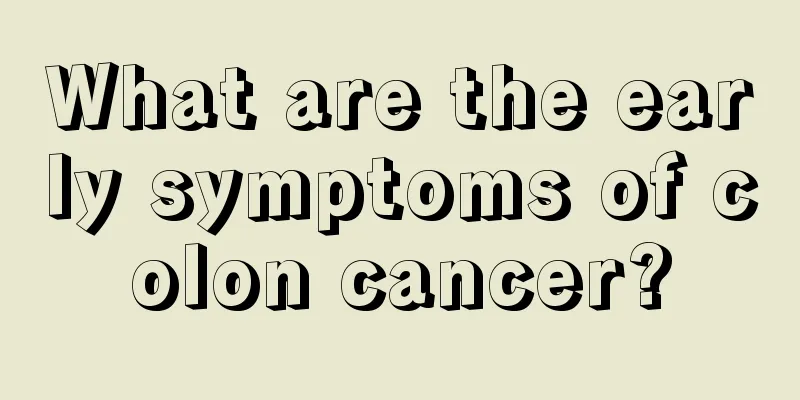What's going on with pharyngeal lymphoid follicle hyperplasia

|
Pharyngeal lymphoid follicle hyperplasia is a common clinical disease, the onset of this disease is mainly related to the stimulation of chronic pharyngitis. Hyperplasia of pharyngeal lymph follicles has a great impact on human health and can easily induce many complications. For such problems, we must follow the principle of early detection and early treatment. So what exactly is hyperplasia of pharyngeal lymph follicles? 1. Impact Patients with pharyngeal lymph follicle hyperplasia often have a tingling sensation in the throat. The pathological changes caused by pharyngeal lymph follicle hyperplasia not only cause local functional disorders in the throat, but can also affect adjacent organs and even the entire body. The proliferation of pharyngeal lymph follicles can spread upward and cause rhinitis, sinusitis, and acute otitis media; and develop downward and cause acute laryngitis, tracheitis, bronchitis, and pneumonia. Pathogenic bacteria and their toxins entering the blood circulation can cause acute nephritis, sepsis, rheumatism, etc. If the upper respiratory tract infection is caused by a virus, it can also lead to viral myocarditis, which is extremely harmful to the body. 2. Pathology Hyperplasia of lymphoid follicles in the retropharyngeal wall. The main reason is that under the stimulation of chronic inflammation, there is extensive hyperplasia of connective tissue and lymphoid tissue in the pharyngeal mucosa and submucosa, and the protrusions of lymphoid tissue around the mucous glands are chronically congested, causing granular protrusions on the posterior pharyngeal wall or even fusion into pieces. If the excretion of secretions in the mucosal fluid glands is blocked, cystic white spots may form on the top of the protruding lymphoid tissue, and yellow-white substances may be seen when it ruptures. When the lesion involves the lateral pharyngeal cord lymphoid tissue, the lateral pharyngeal cord will undergo longitudinal hyperplasia and hypertrophy, which is called "lateral pharyngeal hyperplasia." It is essentially a pathological phenomenon and a manifestation of hypertrophic pharyngitis. 3. Symptoms The patient always feels that there is sticky phlegm attached to the throat or a nucleus-like object blocking it, which is more obvious when there are mood changes, climate changes, or strange smells. During the examination, it can be found that the pharyngeal mucosa is hyperplastic and thickened, and the lymph follicles of the posterior pharyngeal wall are proliferating in scattered or lumpy forms. Over time, the accessory vocal cords proliferate, thicken and narrow, leading to hoarseness. If there are vocal cord polyps, there is a possibility of cancer. Symptoms such as dry throat and mouth, itchy throat, dry cough, hoarseness, chest tightness and shortness of breath are more common. |
<<: What are the methods to whiten naturally dark skin
>>: What is the correct treatment for a sprained neck
Recommend
Why do I get leg cramps when I wake up
Why do I get leg cramps when I wake up? Leg cramp...
Indications for cardiopulmonary resuscitation
I believe that many people do not know the treatm...
What to do if one side of the nose is blocked
People often have problems with their noses, espe...
Will a pituitary tumor shorten life?
When it comes to cancer, everyone is afraid of it...
How to increase hair melanin, what are the methods?
As we all know, young people have a lot of white ...
Is surgery necessary for recurrence of ovarian tumor?
Recurrent ovarian tumors not only easily cause fe...
What is the difference between gastric adenocarcinoma and gastric cancer?
What is the Difference Between Gastric Adenocarci...
What should I do if my neck becomes fibrotic after radiotherapy for nasopharyngeal carcinoma? Can it be cured?
The treatment of nasopharyngeal carcinoma general...
The most effective way to replenish Yang Qi
Yang Qi is the foundation of the human body's...
Can Pyracantha fruit be eaten?
Few people have heard of Pyracantha fruit. Of cou...
What should be paid attention to in the dietary care of patients with hyperthyroidism
The number of patients with hyperthyroidism is ve...
What are the symptoms of prostate cancer and what abnormalities will occur in the body?
Prostate cancer is a common cancer. This disease ...
What is the reason for elbow joint soreness
The elbow joint is a very important joint. The fl...
Is prostate cancer contagious in the later stages?
Prostate cancer is a common disease among men, an...
The efficacy of hawthorn and tuckahoe tea
Hawthorn and Poria cocos tea is made from hawthor...









